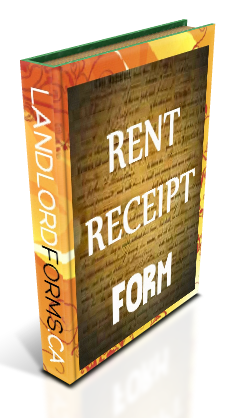Rent collection is a business practice. As such, you need to document the collection of rent via rent receipts. There are a number of ways to do this. But in case you’re wondering if it’s necessary, consider that rent receipts are tangible evidence that a tenant has submitted rent to their landlord. The last thing you want to deal with is a tenant who is short or hasn’t paid at all claiming he/she has. Or worse, the tenant legitimately paid the rent but a mistake on your end leads you to believe rent is unpaid.
Receipts not only clear up the confusion, but also legitimizes the rental transaction. This form contains an intro letter and a template in Word which you can print off and fill in, or type over with the relevant information. It’s the very same template that we use regularly for our tenants.
Rent receipts should only be issued immediately on cash or money order payments. Cheques and even certified cheques should only be answered with receipts AFTER they have cleared. Often times a tenant will ask for rent receipts on an annual basis rather than after each month. It doesn’t really matter if you do them up all at once near the end of the year and/or term or an a month-by-month basis. It’s up to you. Do check with local laws and regulations to determine what’s required of you as a landlord with regard to rent receipts. In Ontario, for example, receipts are required only if the tenant requests them.
Why Do I Need This Form?
- Comply with laws regulating rental property owners regarding issuing rent receipts to renters
- Convenient letter and template for bulk and/or individual receipt issuances
- With good record-keeping, you avoid tenant non-pay or claim-pay issues – particularly for cash tenants

